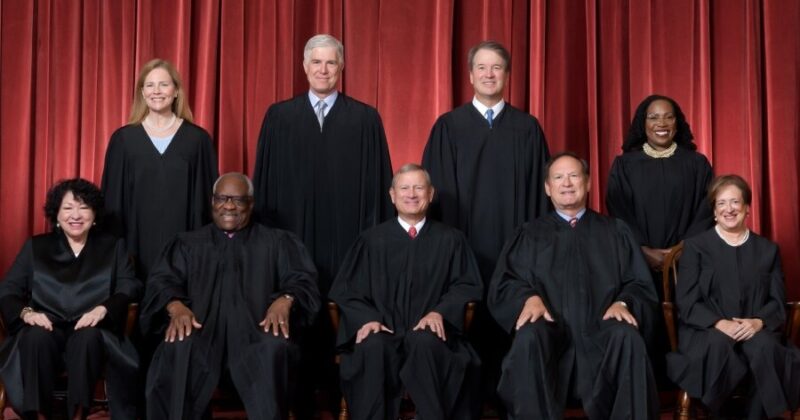On Friday, the U.S. Supreme Court rejected a motion from Texas and New Mexico to settle a dispute over water rights to the Rio Grande River.
In a 5–4 decision, the U.S. Supreme Court ruled that a lower court judge made errors in his recommendations on how Texas, New Mexico, and Colorado should share water from the 1,900-mile-long Rio Grande River. The Supreme Court determined that the federal government still had unresolved claims regarding New Mexico’s water use, and federal attorneys had objected to the settlement agreement.
Writing for the majority, Justice Ketanji Brown Jackson stated that the federal government is entitled to be part of the agreement, based on a 1939 accord on how to share the river’s resources.
“We cannot now allow Texas and New Mexico to leave the United States up the river without a paddle. Because the consent decree would dispose of the United States’ Compact claims without its consent,” the justice wrote.
If the states’ “consent decree [is] adopted, the United States would be precluded from claiming what it argues now—that New Mexico’s present degree of groundwater pumping violates the Compact” regarding how the state is carrying out groundwater pumping.
New Mexico officials have stated that implementing the settlement would necessitate reducing the use of Rio Grande water through various measures, including compensating farmers to leave their fields barren and making infrastructure improvements. While some New Mexico lawmakers have expressed concerns, the attorney general who led the state’s negotiations hailed the agreement as a victory.
Farmers in southern New Mexico have increasingly depended on groundwater wells over the past two decades due to reduced flows and lower water levels in Rio Grande reservoirs. Texas filed a lawsuit over the groundwater pumping, arguing that this practice was reducing the amount of water ultimately delivered under the interstate compact.
A proposed settlement between Texas and New Mexico would establish specific measures to ensure New Mexico delivers the water resources owed to Texas. In return, New Mexico agreed to withdraw its challenges against Texas in exchange for clear guidelines on how water will be accounted for as it flows downstream. The agreement also included provisions for transferring water if Texas received too little or too much.
Last year, after a federal judge recommended that the Supreme Court take up the agreement between the three states, the New Mexico Attorney General’s Office praised the ruling and said that New Mexico farmers and municipalities would receive “their fair share of water” from the river.
However, U.S. government attorneys have contended that the settlement cannot be approved without prior federal government approval and that it infringes upon its interests.
“The parties’ dispute concerns water released from a federal project that the Bureau of Reclamation in the Department of the Interior operates, including by setting the diversion allocations for Project water users downstream,” the government wrote in a previous submission to the Supreme Court. “The Court’s interpretation of the parties’ rights and obligations under the Compact will affect how Reclamation calculates those diversion allocations.”
About a decade ago, Texas filed a lawsuit accusing New Mexico of pumping groundwater below the Elephant Butte Dam and diverting Rio Grande water that should be allocated to Texas.
Months before the Supreme Court’s decision on Friday, Andrew Mergen, a Harvard environmental law professor, stated that the U.S. government has a “strong interest” in the case due to “its obligations to Mexico,” which shares the Rio Grande along its border with Texas.
“Another reason is that this water is delivered in part through a reclamation project. The Bureau of Reclamation is an agency within the Department of the Interior, whose major function is to deliver water to irrigators in the arid [West],” he said, adding that the government also has an “obligation” to deliver water to Native American tribes in the area.
Justice Neil Gorsuch was the lone Supreme Court justice to write a dissent, which was supported by Justices Clarence Thomas, Samuel Alito, and Amy Coney Barrett. Chief Justice John Roberts, along with Justices Brett Kavanaugh, Sonia Sotomayor, and Elena Kagan, sided with Justice Jackson.
Justice Gorsuch wrote that with the Supreme Court’s decision, Texas and New Mexico are now left with “tens of millions of dollars in lawyers’ fees” and “with only the promise of more litigation to follow.”
“I fear the majority’s shortsighted decision will only make it harder to secure the kind of cooperation between federal and state authorities reclamation law envisions and many river systems require,” he added.
Share your thoughts by scrolling down to leave a comment.

